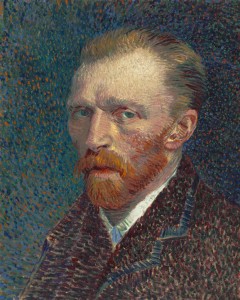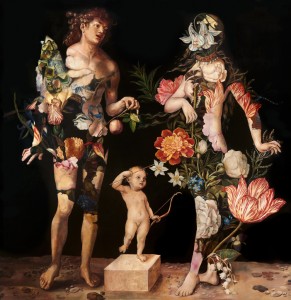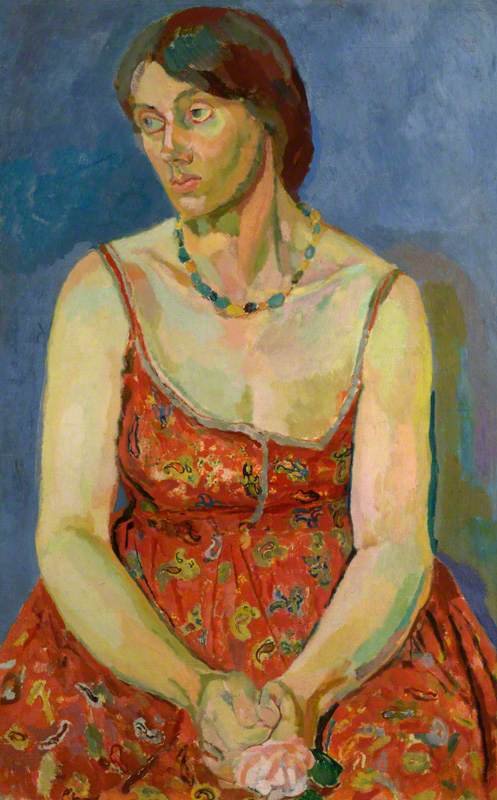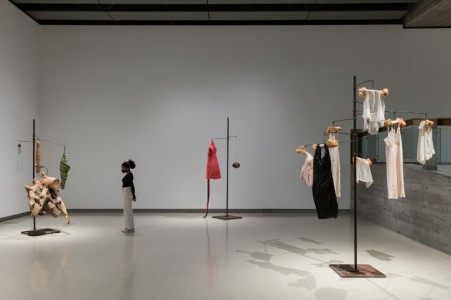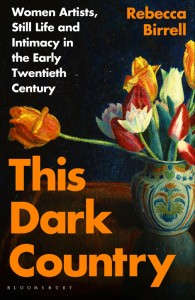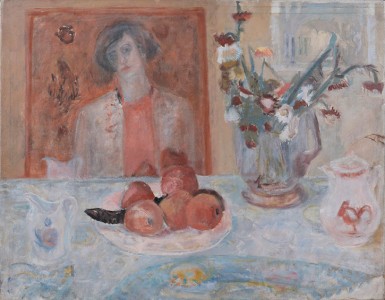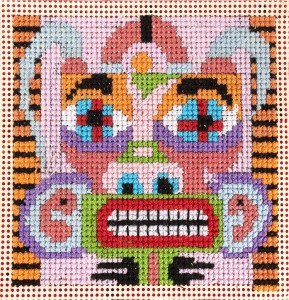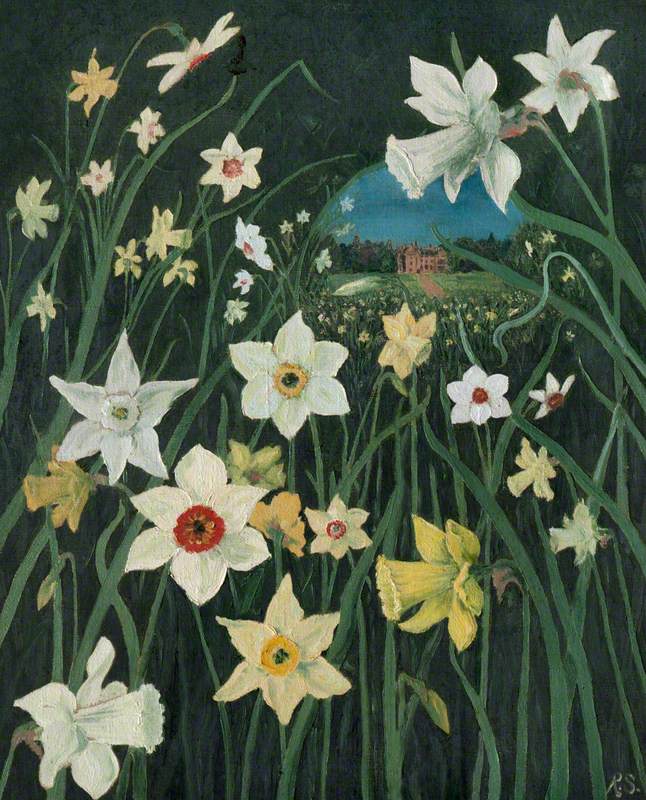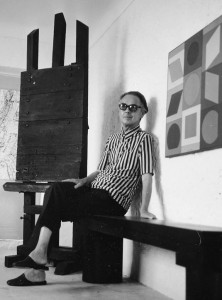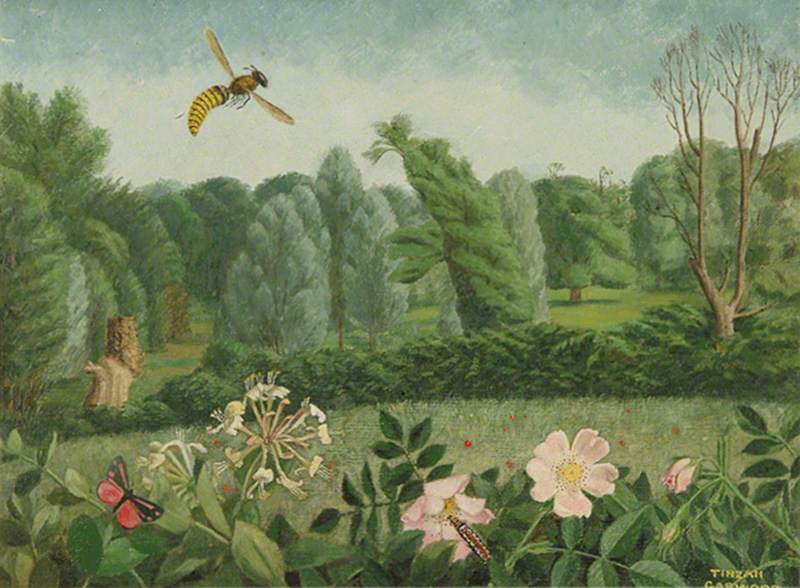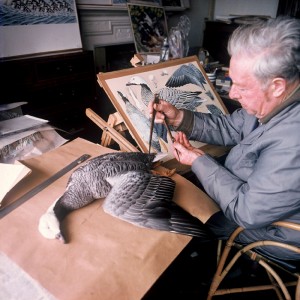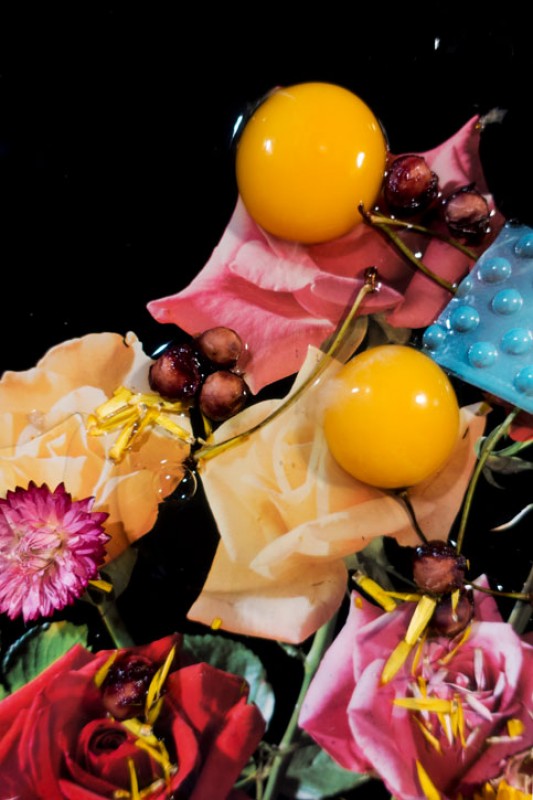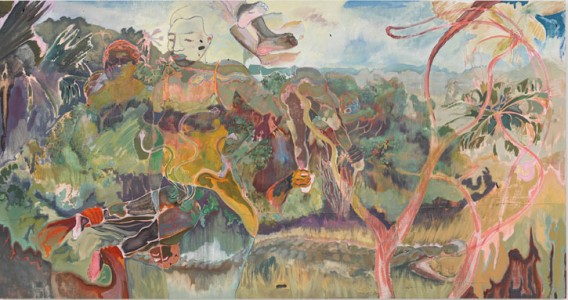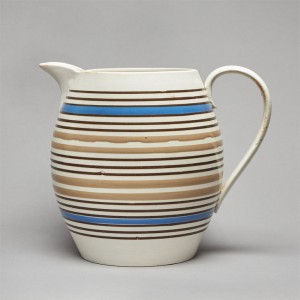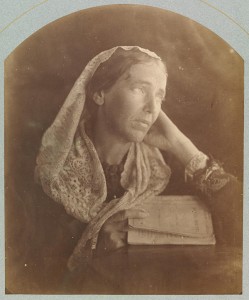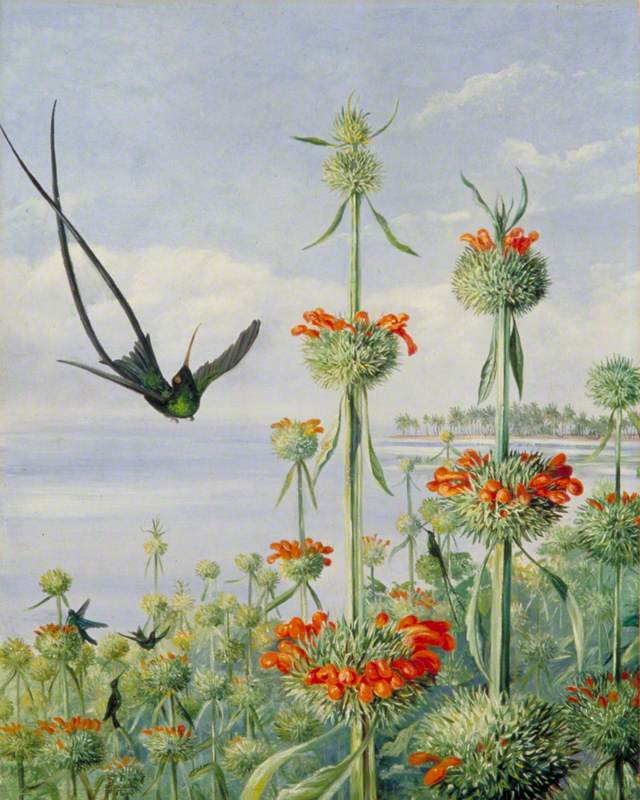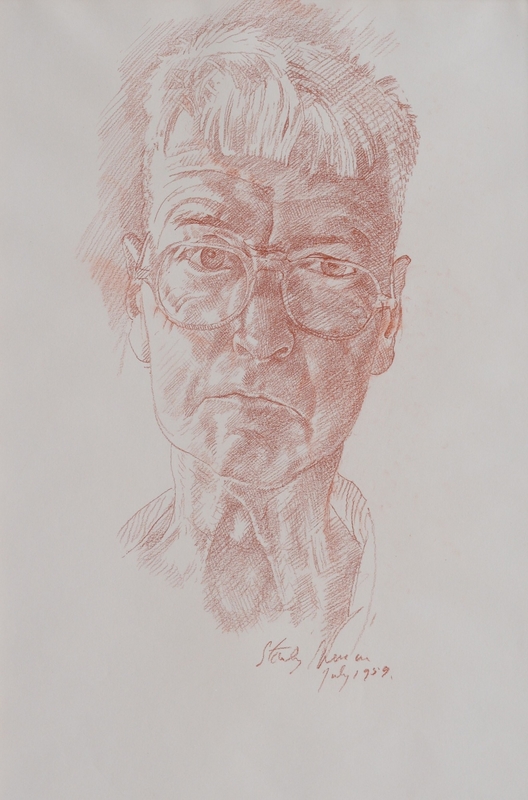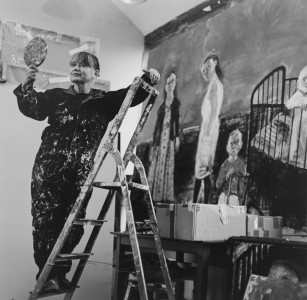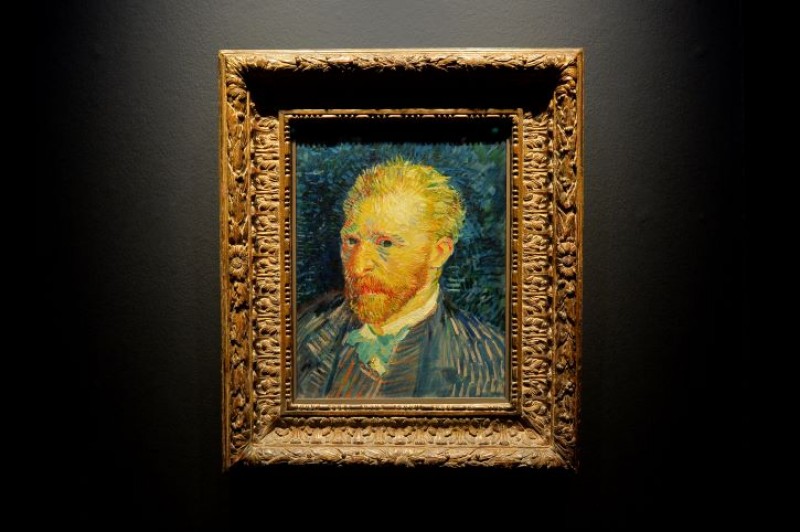Godfried Schalcken was already famous in his homeland of the Dutch Republic when he sailed for England in 1692. Celebrated for his small, intricately detailed nocturnal scenes, Schalcken hoped to grow his following across the Channel in the court of King William and Queen Mary and vie for the position of official portrait painter to the Crown.
Self Portrait by Candlelight
1695
Godfried Schalcken (1643–1706) 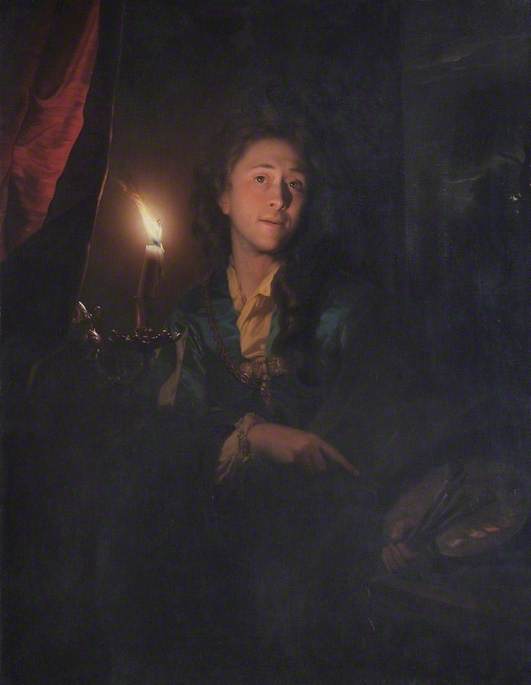
This self-portrait acted as his visual CV. Aware that no other portrait painter in England at that time could rival his mastery of light and shade, Schalcken bathes the scene in candlelight, promoting his unique skill. He identifies himself as the author of this work by blatantly pointing to the artist's palette in his left hand. Light shimmers off the red silk swag and Schalcken's silk slashed doublet, recalling the portraits of Anthony van Dyck. In this way, Schalcken claims his place in a distinguished line of Dutch artists working as court painters in England.
Schalcken produced much larger canvases than usual while in England in order to compete with the incumbent court painter Sir Godfrey Kneller. Following a 'Go Big or Go Home' philosophy, this is one of the largest portraits Schalcken ever made at over a metre high.
Schalcken's portrait – a masterclass in self-promotion – highlights the close connection between Dutch and British painting in the seventeenth century and the enduring truth that portraits should not be taken at face value. There is always a hidden agenda. Schalcken takes advantage of the forgiving nature of candlelight in this work to depict himself as much younger than his 52 years. It is thought that the gold chain around the artist's neck, a symbol of aristocratic patronage, may have been painted in at a later date to further emphasise Schalcken's importance.
Although he was commissioned to paint William III's portrait in the same style as his own, Schalcken never achieved his dream of being made a royal portrait painter and returned to the Dutch Republic in 1698.
Jane Simpkiss, Fine Art Curator at Leamington Spa Art Gallery & Museum
